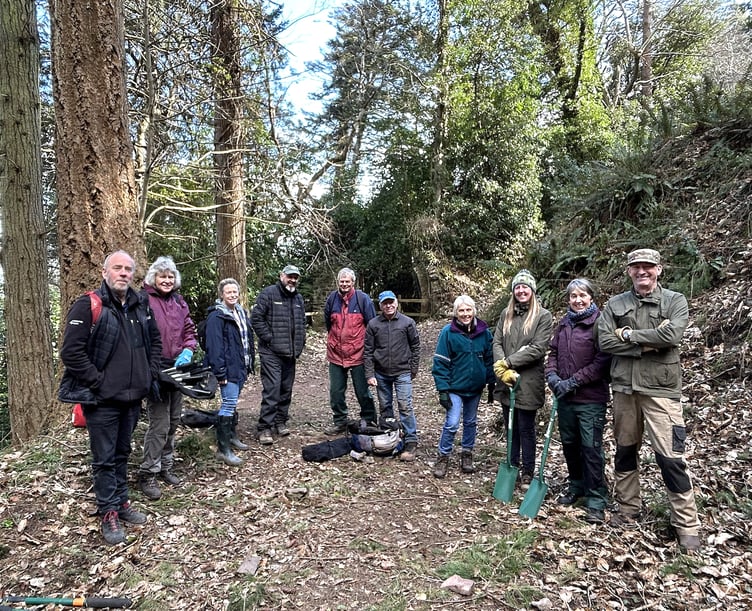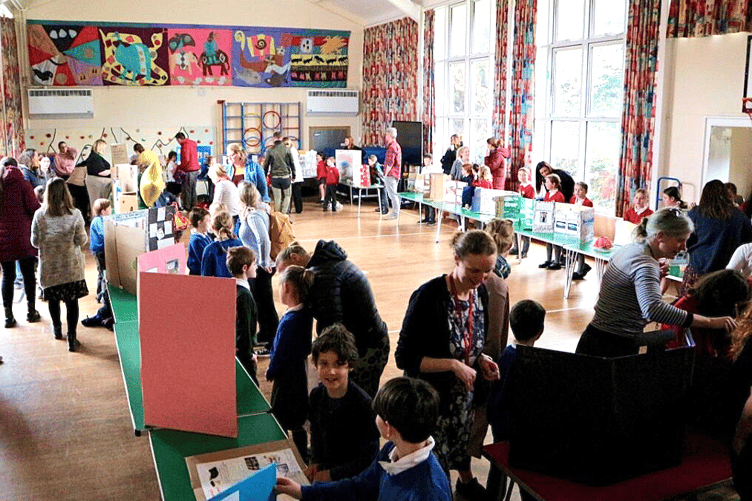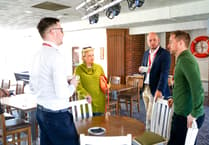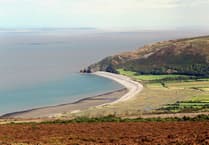Here, JEFF COX, a trustee of Dovery Manor Museum, looks at the life of the woman who pioneered modern computer programming.
In July 1835, a horse-drawn carriage rattled its way downhill through Culbone Woods, beneath the thick canopy of oak and beech trees, alongside the tumbling Yearnor Stream.
On board were a newly-wed couple, heading for their honeymoon at Ashley Combe, an impressive Italianate mansion built on a wide terraced ledge, with stunning views over Porlock Bay and across to Hurlstone Point.

An Exmoor National Park Authority woodland restoration group helping to clear Ashley Combe, near Porlock.
William King, a wealthy landowner from Surrey, had spent many months extending the property especially for this moment, upgrading what had been his family’s summer residence for the past 40 years. The rugged rural scenery must have been a shock to his young 20-year-old bride who, until this time, had spent much of her life closeted in wealthy London salons.
His bride was Augusta Ada Byron, the only legitimate daughter of the controversial Romantic poet, Lord Byron. After William was ennobled, she was later known as Ada Lovelace and her subsequent scientific and mathematical achievements in the 1840s have led to her now being recognised as the world’s first computer programmer.
Much has been written about Ada Lovelace in the past decades, since her long neglected achievements were finally recognised in the 1950s.
Now, a new action group, Ada in Porlock, is bringing greater recognition to the significance of Ada’s presence in the district, using the inspiration of her achievements to drive a number of important community projects.
For many years, the significance of her life in West Somerset has remained sadly under-appreciated. After her honeymoon in 1835, Ada continued to travel to Ashley Combe each summer, accompanied by William and their growing family.
Here, Ada threw herself into life above Porlock Weir. With William, she helped transform Culbone Woods, the native Atlantic temperate forest clinging to the Exmoor coastline. Together, they imported and planted rare shrubs and trees - towering sequoias from California, strawberry trees, cedars and fir trees - creating one of the first significant arboretums in the South West of England.
She helped oversee the creation of a series of drives through the woods to the isolated St Beuno’s Church at Culbone.
She regularly went on solitary rides through the woods and moorland and enjoyed the vast views across the Bristol Channel to the Welsh coastline, and south, into the heart of Exmoor.
On occasions, she’d ride as far as Simonsbath, where Frederic Knight was developing his own arboretum as Ashcombe Gardens and pursuing his father’s project to tame their wild Exmoor estate into productive farmland.
However, while at Ashley Combe she also continued her pioneering scientific studies, exchanging her views in long letters to such scientific luminaries as Michael Faraday and John Herschel.
And, of course, she continued her close collaboration with Charles Babbage, the pioneering mathematician and inventor who was developing his revolutionary Analytical Engine, the design for the world’s first mechanised computing machine.
On occasions, Babbage would travel from London to Porlock to continue his discussions with Ada as they walked through the ornate grounds of Ashley Combe, and out into Culbone Woods. Ada called one of these paths ‘The Philosopher’s Walk’.
Although often overshadowed by Babbage in her lifetime - she died of cancer in 1852 aged only 36 -Ada is now accepted as the first person to recognise that early computing machines had potential beyond just number-crunching and devised what is now believed to be the first computer programme - an algorithm designed to be carried out by a machine.
She also envisioned Babbages invention’s potential to manipulate data and solve complex problems by following a series of simple instructions - a concept which became a cornerstone of computer science.
Ada Lovelace’s contributions to modern computing were so far ahead of their time that it took nearly a century for the value of her work to be recognised. The second Tuesday in October is now designated Ada Lovelace Day and a US government computer programming language is called “Ada”. There is also a research institute in her name.
But not all her theories were successful. A compulsive gambler - she once lost £300,000 in today’s money on a horse in the Epsom Derby - she created a mathematical model for winning large bets. However the scheme failed and left her with thousands of pounds of debt.
The Ada in Porlock action group recently ran a series of workshops and competitions across the eight Moorland Federation primary schools and at Minehead Middle School, encouraging children in the study of the STEM subjects - science, technology, engineering and mathematics.
This has formed the basis for annual science competitions and citizen science projects, and within the next 12 months Ada in Porlock expects to be working with every primary, middle and secondary school in North West Somerset.
They have also teamed up with pioneering local technology companies Singer Instruments and Shearwell Data, to illustrate to pupils the potential of these subjects to help to achieve fulfilling careers locally.
Ada in Porlock has also started a long-term collaboration with the Exmoor National Park Authority, with teams of volunteers embarking on a sensitive restoration of parts of Culbone Woods, revealing the plants and landscaping developed by Ada and William in the 1840s.
And a new walk around Porlock is also about to be launched, visiting the historic sites that Ada Lovelace would have recognised in her day.
To learn more about Ada’s life in Porlock, and how to get involved in this exciting new project, Ada in Porlock is staging a public launch in Porlock Village Hall on Tuesday, May 27, from 10.30am until 1.30pm, to be attended by local MP Rachel Gilmour.
A number of speakers will present more details of the group’s various activities and everyone is welcome to attend.





Comments
This article has no comments yet. Be the first to leave a comment.